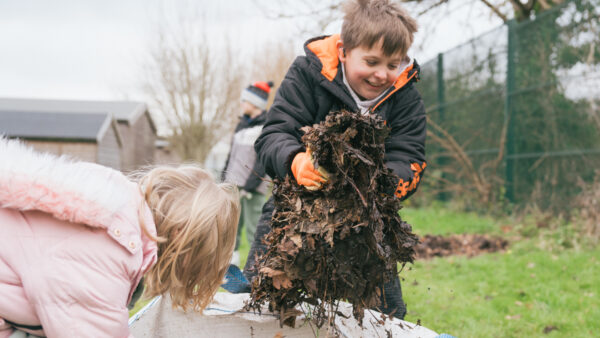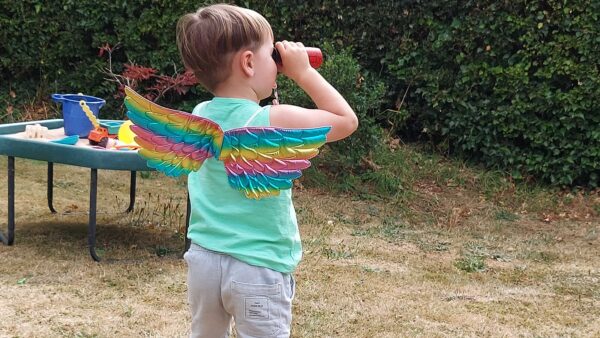Making Connections is a publication by Richard Price and Jane Stoneham. It is about the connections between people and nature, and how we can make parks, public greenspace and countryside available to everyone, regardless of disability, age or circumstance.
There are millions of people in the UK who do not have access to public greenspace. This book examines the reasons, and offers solutions to the primary barriers and challenges in the form of real world case studies and guidance. With growing awareness of the importance of inclusive environments, the guide remains as relevant today as it was when it was written in 2001.
The book is based on surveys that highlight the barriers preventing older and disabled people from enjoying greenspace, interviews with greenspace managers and designers and site visits. It is aimed at practitioners involved in the planning, design and management of public open space and anyone interested in making outdoor spaces inviting and usable for the widest range of people.
The publication covers issues such as:
- the importance of inclusive information and interpretation
- what motivates people to visit sites
- how people can be encouraged to use and get involved in sites
- legislation and policy
- site design and management considerations
The Making Connections research study
The research explored the connection between people and place, and how we can make meaningful opportunities to use and enjoy the outdoor world available to everyone, regardless of age or disability. It was completed in 2001 but the findings remain relevant today. As far as we know it is the only survey of its kind and it continues to provide an important basis for our work.
The study was inspired by a concern that many public greenspaces in the UK were failing to inspire, or even make it possible for disabled and older people to use them. This pattern of under-use has been expressed to us informally by many site practitioners and confirmed by a range of research studies.
Making Connections highlights the major issues relating to accessible greenspace, identifies examples of good practice from around the country and conveys the views and experiences of disabled and older people and greenspace managers. This involved a comprehensive literature review, site visits to different greenspace sites, contact with disabled and older people, policy makers and site managers, and two national surveys.
What the Making Connections survey showed
Making Connections showed that a combination of physical, intellectual and social barriers prevents many disabled and older people from experiencing and engaging with public greenspace.
The disengagement of disabled and older people from public open spaces represents the disengagement of a significant proportion of society: one in five people. Finding ways to remove the barriers to access and involvement has potential to improve quality of life for many and to bring forward a large and diverse range of people as active members of communities and supporters of the natural environment.
The Making Connections study
Accessibility is a complex issue and relies on both physical factors (such as distance from home) and socio-cultural factors (such as people wanting to go somewhere and feeling comfortable there). These social factors are generally less obvious but often very significant in making disabled people feel excluded.
The Making Connections project was designed to address accessibility in terms of these socio-cultural factors, in particular highlighting ways that greenspace can provide rich experiences and a means of disabled people connecting with their community and with their surrounding environment. The aim was to work with disabled people to inform professional practice.

The User Survey
Most visitor surveys focus on people who are already using greenspace, less so on non-users. We wanted to find people who are excluded, either through choice or because of barriers, and the reasons why they are not visiting greenspace. This involved a postal questionnaire and interviews with disabled and older people.
The survey prioritised disabled and older people who are out-and-about but not necessarily visiting public greenspace sites. This would gather views of people who might well visit if certain adjustments or provision were made. There were few surveys of this kind to draw upon and to an extent the development of the methodology in itself was an important part of the research. For this reason, we felt it was important to include a summary of the survey questions and data in the publication.
Feedback from the User Survey identified the barriers that disabled and older people experience, the benefits and attractions that greenspace can offer as well as an insight into the ways in which age and disability can influence expectations, opportunities and choices.
The site survey
The Site Survey targeted greenspace practitioners and policy makers. The findings showed the attractions on offer, how site managers were responding to the disability community and what kind of good practice were taking place.
The site survey showed a lively mix of attractions such as attractive landscape settings, café and refreshment facilities, events and activity programmes. It also revealed that the demonstration of inclusive design was patchy, and it was rare to find complete sites showcasing best practice. Making Connections was produced to change this situation, and to help greenspace managers, designers and planners make their sites available to all visitors.




